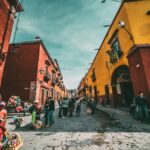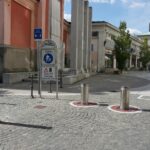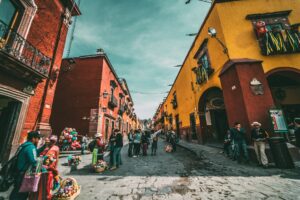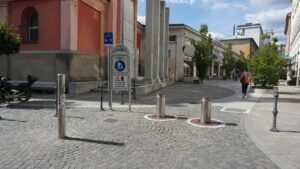MoMA exhibition
New York, New Publics
Organized by Evangelos Kotsioris, Assistant Curator, and Martino Stierli, The Philip Johnson Chief Curator, with Paula Vilaplana de Miguel, Curatorial Assistant, Department of Architecture and Design.
New York, New Publics is the inaugural installation of Architecture Now, a new periodic exhibition series that will serve as a platform to highlight emerging talent and foreground groundbreaking projects in contemporary architecture.
February 19 – July 29, 2023
.
The Museum of Modern Art announces Architecture Now: New York, New Publics, the inaugural installation of a new exhibition series that will serve as a platform to highlight emerging talent and foreground groundbreaking projects in contemporary architecture. The first iteration of the series, New York, New Publics, will explore the ways in which New York City–based practices have been actively expanding the relationship of metropolitan architecture to different publics through 12 recently completed projects. In addition, each project will be accompanied by a new video by Brooklyn–based filmmaker Hudson Lines, produced on the occasion of the exhibition.
In a city where many aspects of our social lives are shaped by real estate and economic forces, architecture can play a vital role in fostering participation and belonging. New York, New Publics showcases 12 projects for public-facing spaces across New York City’s five boroughs. In contrast to the violent nature of urban renewal and other disruptive metropolitan initiatives of the past century, recent design approaches propose subtler, nimbler interventions. Considering the city as an ecosystem, these inventive approaches envision a future in which architecture creates more accessible, sustainable, and equitable cities.
This exhibition brings together a wide variety of design proposals, ranging from waterfront parks, networks of public pools, and cultural spaces to local community gardens, subway stations, and virtual monuments for underrepresented populations. They reimagine the uses of civic infrastructure, the sharing of private resources, and the potential for new technologies to create virtual spaces for political engagement. Models, sketches, drawings, and photographs are featured alongside full-scale architectural components, prototypes, and an augmented-reality installation. Each project is accompanied by a newly produced video that provides a glimpse into the daily uses of these architectures.
Read more on the MoMA website.
Recommended by Luisa Bravo











More Stories
A Space of Our Own
Public Space Award in NYC by Open Plans
PublicSpaces Conference in Amsterdam in 2024